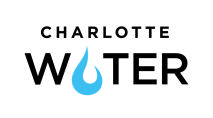Posted on February 26, 2018
Last week, the House of Representatives passed H.R. 620, a bill to improve the Americans with Disabilities Act (ADA) by reducing opportunities for people to file nuisance lawsuits under the law. The legislation, which allows property owners to fix any alleged violations while keeping penalties in place for businesses that remain in noncompliance, passed 225-192 and will now move to the Senate.
The measure is aimed at eliminating so-called “drive-by lawsuits,” a tactic used by some “unscrupulous trial lawyers,” as House Judiciary Committee Chairman Bob Goodlatte (R-VA) called them, whose lawsuits, he said, “[divert] money from accessibility where it belongs.” As documented in a 60 Minutes report last year, some lawyers cruise around local communities in an attempt to spot minor ADA infractions at offices, gas stations, malls and other locations. In some cases, these lawyers don’t even bother to leave their homes, and instead use aerial images from Google Maps to target alleged violators.
H.R. 620 requires that anyone making a complaint against a business must file a written complaint. It gives the business owner 60 days to fix any violation, and up to an additional 60 days if the owner is acting in good faith and can demonstrate substantial progress toward making the changes. Owners who refuse to address violations could be sued.






 With capacity challenges mounting in numerous basins across the City, Charlotte Water is taking steps to assure developers they’ll have the sewer taps for their projects when the need arises.
With capacity challenges mounting in numerous basins across the City, Charlotte Water is taking steps to assure developers they’ll have the sewer taps for their projects when the need arises.
 THE METROPOLITAN Downtown Columbia
THE METROPOLITAN Downtown Columbia
 Open ceilings, with their exposed ductwork and industrial vibe have become popular – but trendy rarely equals inexpensive. For many years, omitting the traditional drop ceiling was assumed to be not just cooler but also to cost less. Common sense seemed to be that by choosing open ceilings, the cost of the drop ceiling was simply avoided, saving on labor, materials and time.
Open ceilings, with their exposed ductwork and industrial vibe have become popular – but trendy rarely equals inexpensive. For many years, omitting the traditional drop ceiling was assumed to be not just cooler but also to cost less. Common sense seemed to be that by choosing open ceilings, the cost of the drop ceiling was simply avoided, saving on labor, materials and time.